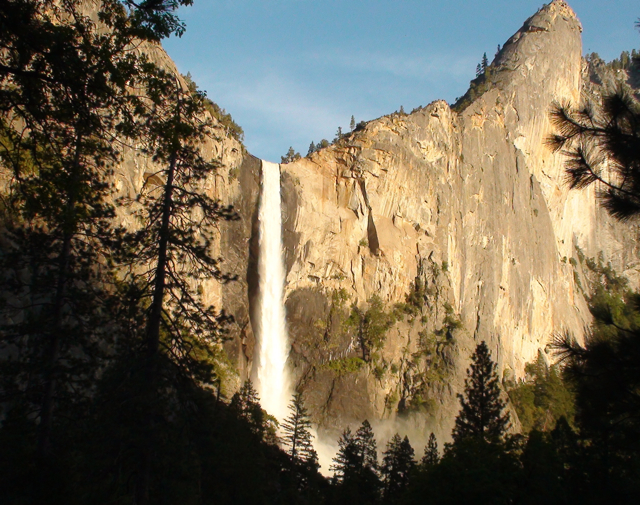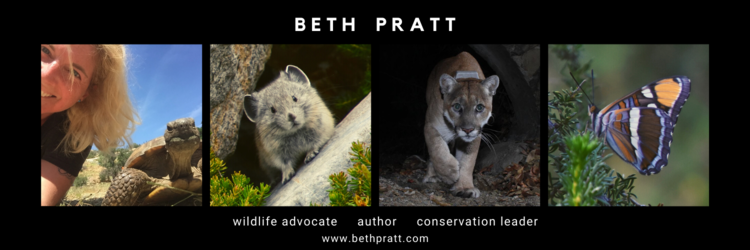 Bridalveil Fall in Yosemite, June 11, 2011 (Photo by Beth Pratt)
Bridalveil Fall in Yosemite, June 11, 2011 (Photo by Beth Pratt)
At the viewing point from the bottom of Lower Yosemite Falls, park visitors—drenched from the spray—glance up in awe as over 2,000 gallons of water per second fall with a thundering roar 2,425 feet down from the granite cliffs above.
Yosemite’s waterfalls always provide a spectacular show, but this year the 384% above normal snowpack for June has given birth to a breathtaking display of moving water not usually seen this late in the season. Waterfalls in the park usually peak in mid-May, and Yosemite Falls is often dry by the end of August.
When walking in Yosemite Valley this past week, it was impossible not to hear the thunderous music of the falling water, especially when hiking up the Mist Trail. The rocky staircase winds by Vernal and Nevada Falls, and the waterfalls douse visitors as they pass and roar as loud as a passing train. Other waterfalls, like Royal Arch Cascade, fall gentler and play a more subdued tune as it slides down the smooth granite above the Ahwahnee Meadow.
For intrepid hikers, the ultimate Yosemite waterfall experience is making the trip to the top of Yosemite Falls, the highest waterfall in North America. Although the trek is strenuous—three grueling miles with almost 3,000 feet of elevation gain—those who make it receive the ultimate reward: being able to stand next to the top of the mighty falls as it tumbles over the brink.
For more information on visiting Yosemite, see the official site of the National Park Service.


